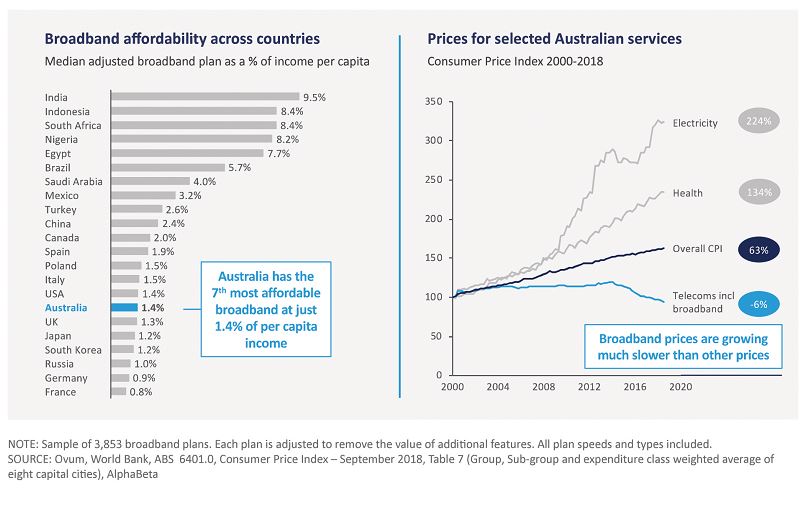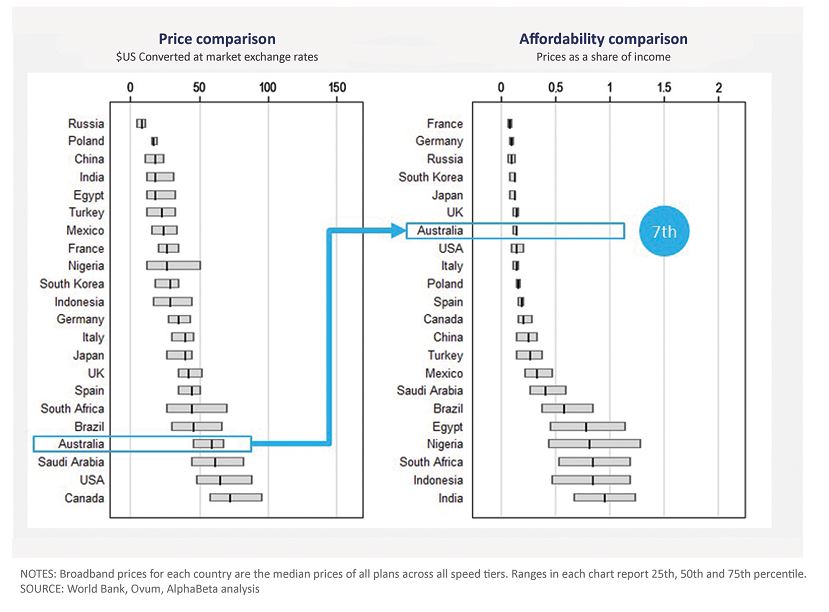Balancing wholesale pricing with industry economics
It doesn’t surprise me that as the telecoms industry heads into financial results season, NBN Co's wholesale pricing plans have been cast in the spotlight once again. Further, what retailer, regardless of industry, doesn’t want to get cheaper services from their wholesaler? I completely understand this approach.
But amid these discussions around cost, it’s important to remember why NBN was set up in the first place.
The NBN Co policy intent was twofold: to reset the competitive playing field that for too long had been dominated by a handful of telecoms companies; and to fundamentally change the way Australians live and work by offering universal broadband access across the continent. This included parts of the country that retailers had felt were commercially unattractive.
With less than a year to go before the build is finished, more than ten million homes and business can connect to the network, and we continue to bring connectivity to parts of Australia that never before had access to high-speed broadband.
We know a strong telecoms industry is vital to Australia’s digital future.
That’s why we continue to work hard to strike the right balance between creating a competitive environment for internet and phone providers, while ensuring we can create a sustainable business model to allow us to reinvest into the network and deliver the social and economic benefits that broadband promises.
As with any project of this size and structural reform, there will be criticisms.
But to be clear, our business model to connect homes and businesses to the nbn™ broadband access network, to improve competition across the industry, to reinvest in the network, and to bring the benefits of broadband to the nation has not changed since 2011.
We continue to listen to industry feedback, to hold regular pricing consultations with our retailers and to amend our wholesale pricing structures when it makes sense to do so.
The result of those consultations and changes has seen NBN Co issue significant price reductions in recent years to help the economics of the nation’s internet and phone companies, while also boosting customer take-up of higher speed plans.
Countering the criticism
Of the more than 5.5 million customers on services over the nbn™ access network today, more than 64 per cent are on plans of 50 Mbps or higher. Retailers have seen the benefit of these changes with 80 per cent of new customers taking up these higher speed plans.
Criticisms that our business model creates an unsustainable industry are unfounded.
If this was the case, we would not see retailers signing up more than 40,000 new customers to the NBN every week, and we would not have seen the 75 per cent increase in the number of service providers selling services over the nbn™ access network over the last four years.
Claims about Australia’s internet pricing being expensive in relation to the rest of the world are also unfounded.
NBN Co recently commissioned economics analyst firm Alpha Beta to compare retail pricing in real terms and found that in a study of 4,578 broadband plans from 22 countries, Australia was the 7th most affordable market.

The report also found that since 2000, Australia’s cost of living has risen 63 per cent, while telecommunications prices fell six per cent.
This was mostly due to a steep fall in telecommunications prices in the last five years, since the rollout of the nbn™ access network gathered pace and compares against a tripling of electricity prices, a 134 per cent increase in the price of healthcare and a 63 per cent jump in the cost of food.
We understand that companies have an obligation to be profitable, and that requires doing what they can to lower their costs.
But among the criticism it’s worth remembering that customers continue to sign up to the nbn, CVC prices continue to fall, and more internet providers continue to enter the market.

Keeping our purpose in sight
In all the industry gnashing about NBN Co’s pricing model, there is one key point that is always omitted. And that’s the fact that the nbn™ access network exists to serve all Australians, from young apartment-dwelling couples in the heart of the nation’s capital cities, to families living in far-flung regions where their broadband connection is their connection to family, friends, work and education.
There is no doubt that it costs a lot of money to build a broadband network across a country of this size.
We are not simply talking about the upfront capital costs to dig the holes and lay the cables, and connect homes and businesses.
There is the ongoing cost of ensuring the network can be maintained, is resilient and secure, and that it keeps up with ever-growing data demands. And let’s not forget that the sum of all NBN Co payments to Telstra was around $2 billion this year.
Our Corporate Plan points to a continuing payment to Telstra for access to ducts, dark fibre and facilities of $1 billion annually from FY21, representing 20 per cent of forecast revenues, and continuing for decades after the build is completed. This has an obvious impact on wholesale prices.
Australia needs a sustainable National Broadband Network and every decision we make aims to ensure that this can remain the case for the broader benefit of all Australians.



